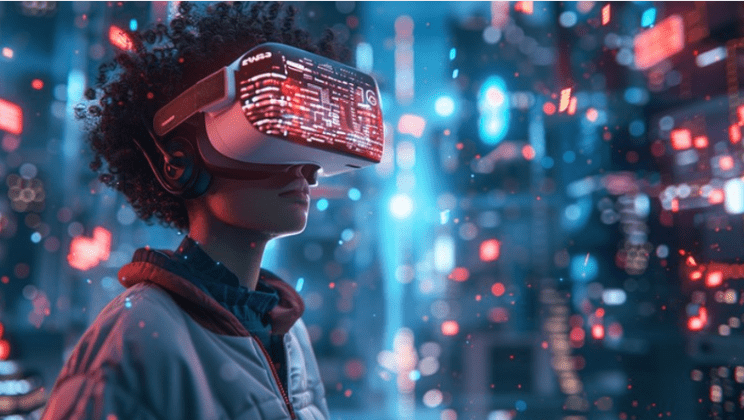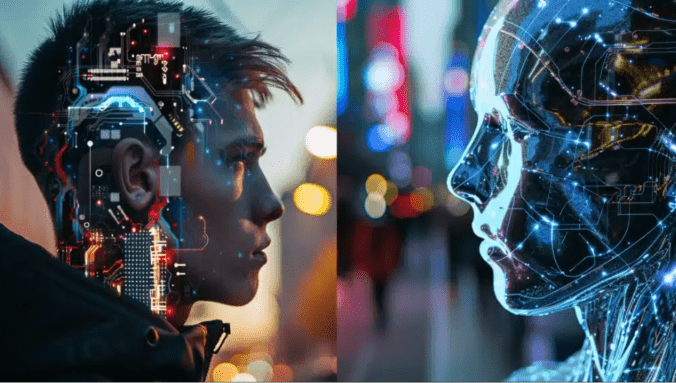Introduction
Virtual Reality (VR) is no longer just a concept from science fiction—it has become a transformative tool impacting a wide range of industries. By immersing users in digitally created environments, VR is revolutionizing entertainment, healthcare, education, retail, and even social interactions. With rapid advancements in hardware and software, VR is shaping how we experience, learn, work, and connect.
The Evolution of VR Technology
Historical Progression
The roots of VR date back to the early 20th century with devices like the View-Master, which offered stereoscopic visuals. However, the true breakthrough came in the 1960s with inventions like the Sensorama, which combined visuals, sound, vibration, and even smell to simulate environments.
By the 1990s, companies like Nintendo and Sega attempted to bring VR to the gaming market, but technological limitations and high costs hindered widespread adoption. Fast forward to the 21st century, and the introduction of headsets like the Oculus Rift, HTC Vive, and PlayStation VR marked the beginning of VR’s mainstream journey.
Modern Innovations
Today, VR technology boasts cutting-edge features like 6DoF (six degrees of freedom), enabling users to move freely within virtual spaces. Modern devices incorporate inside-out tracking, removing the need for external sensors, and foveated rendering, which focuses computing power on where the user is looking for optimal performance. Wireless headsets like the Meta Quest series have also made VR more accessible and portable.
Transforming Entertainment and Gaming
Immersive Gaming
Gaming is arguably the most recognized application of VR. Titles like Beat Saber, Half-Life: Alyx, and VRChat offer interactive experiences that blur the line between the virtual and real worlds. These games not only entertain but also provide physical activity, with some VR games doubling as exercise routines.
The rise of multiplayer VR platforms allows players to interact with friends and strangers in virtual worlds. Competitive esports tournaments now feature VR games, showcasing their growing popularity in the global gaming community.
Virtual Concerts and Events
The COVID-19 pandemic accelerated the adoption of virtual events. Platforms like Wave and Sansar host live concerts where fans can experience performances from unique perspectives. These events include interactive elements, such as virtual meet-and-greets and real-time audience reactions, making them as engaging as physical concerts.
Sports organizations are also experimenting with VR to bring fans closer to the action. For example, the NBA offers VR broadcasts of games, allowing fans to watch from courtside seats.
Enhancing Education and Training
Classroom Applications
VR is redefining traditional education by making learning experiential. For instance:
- Virtual field trips: Students can explore ancient civilizations, deep-sea ecosystems, or even distant planets without leaving their classrooms.
- STEM education: Complex subjects like molecular biology, physics, and chemistry become more engaging with VR simulations that allow hands-on experimentation in a risk-free environment.
Moreover, VR fosters inclusivity by providing customized learning experiences for students with special needs, enabling them to interact with virtual environments at their own pace.
Professional Training
Industries requiring precision and safety are turning to VR for training. Notable examples include:
- Healthcare: Surgeons use VR to practice intricate procedures, gaining confidence without putting patients at risk.
- Aviation: VR simulators train pilots to handle emergency situations in a controlled environment.
- Construction and Engineering: Workers can practice assembling machinery or navigating hazardous environments through VR, reducing workplace accidents.
Revolutionizing Healthcare
Therapy and Rehabilitation
VR is a groundbreaking tool for mental health treatment and physical rehabilitation. In therapy, VR is used for exposure therapy, where patients face fears like heights, flying, or public speaking in controlled virtual environments. Studies have shown that this approach is highly effective in reducing anxiety and phobias.
In physical rehabilitation, VR engages patients in gamified exercises that make therapy more enjoyable. Devices like the MindMaze system help stroke survivors regain motor skills by simulating real-world activities.
Medical Training
Training healthcare professionals has traditionally been resource-intensive and high-stakes. VR addresses these challenges by offering detailed simulations of surgical procedures, enabling doctors to practice with realistic visuals and haptic feedback. Platforms like Osso VR and ImmersiveTouch have revolutionized how medical skills are taught and refined.
Redefining Remote Work and Collaboration
Virtual Offices
As remote work becomes the norm, VR is stepping in to make virtual workplaces more engaging. Companies can create customized virtual offices where employees meet as avatars to brainstorm, present ideas, and socialize. Tools like Spatial and AltspaceVR make remote work feel more interactive and collaborative.
Interactive Collaboration
VR also benefits industries like architecture and product design. Teams can co-create and review 3D models in real time, providing immediate feedback and improving efficiency. For example, automakers use VR to prototype vehicle designs before committing to physical production.
Expanding Tourism and Travel
Virtual Tours
VR has opened new possibilities for tourism by offering immersive previews of destinations. Platforms like Expedia and National Geographic VR allow users to “visit” historical landmarks, natural wonders, and cultural sites from the comfort of their homes. This not only inspires travel plans but also serves as a tool for education and entertainment.
Accessibility for All
For individuals who cannot travel due to physical or financial constraints, VR offers an inclusive way to explore the world. It provides access to experiences that were previously unattainable, bridging gaps and enriching lives.
Integrating VR in Retail
Virtual Stores
Retailers are leveraging VR to create immersive shopping experiences. Virtual stores replicate the layout of physical shops, enabling customers to browse products as if they were there in person. IKEA Place, for example, lets users see how furniture fits in their homes before making a purchase.
Product Visualization
High-end brands in fashion, automotive, and real estate use VR to showcase their products. Customers can virtually test-drive cars, try on clothes, or tour luxury apartments, enhancing decision-making and reducing returns.
The Role of VR in Social Interaction
Virtual Communities
Social VR platforms like VRChat, Rec Room, and AltspaceVR provide users with spaces to socialize, collaborate, and play games. These communities cater to diverse interests, from casual hangouts to professional networking events.
Events and Gatherings
VR offers creative ways to host events, such as virtual weddings, reunions, and conferences. These gatherings bring people together regardless of geographical barriers, making them increasingly popular in a globalized world.
Challenges and Future Potential
Overcoming Barriers
Despite its promise, VR adoption faces challenges, including:
- Cost: High-quality VR headsets and accessories remain expensive for many consumers.
- Content: The availability of engaging and diverse VR experiences needs to expand to attract a broader audience.
- Motion Sickness: Some users experience discomfort or nausea during prolonged VR use, which developers are addressing with improved hardware and software.
Looking Ahead
The future of VR lies in its integration with other technologies. 5G networks will enable seamless streaming of VR content, while artificial intelligence will make virtual environments more adaptive and realistic. Augmented reality (AR) and VR are also converging, paving the way for mixed reality (MR) experiences that blend the digital and physical worlds.
FAQs
What industries benefit most from VR?
Gaming, healthcare, education, real estate, and retail are among the industries that benefit most from VR technology.
How does VR improve learning?
VR allows students to engage with content interactively, offering virtual field trips, experiments, and realistic simulations that enhance understanding and retention.
Is VR only for gaming?
No, VR has applications in healthcare, education, tourism, retail, social interaction, and professional training, making it a versatile tool across industries.
What are the challenges of VR adoption?
Cost, limited content availability, and issues like motion sickness are some of the key challenges faced by the VR industry.



